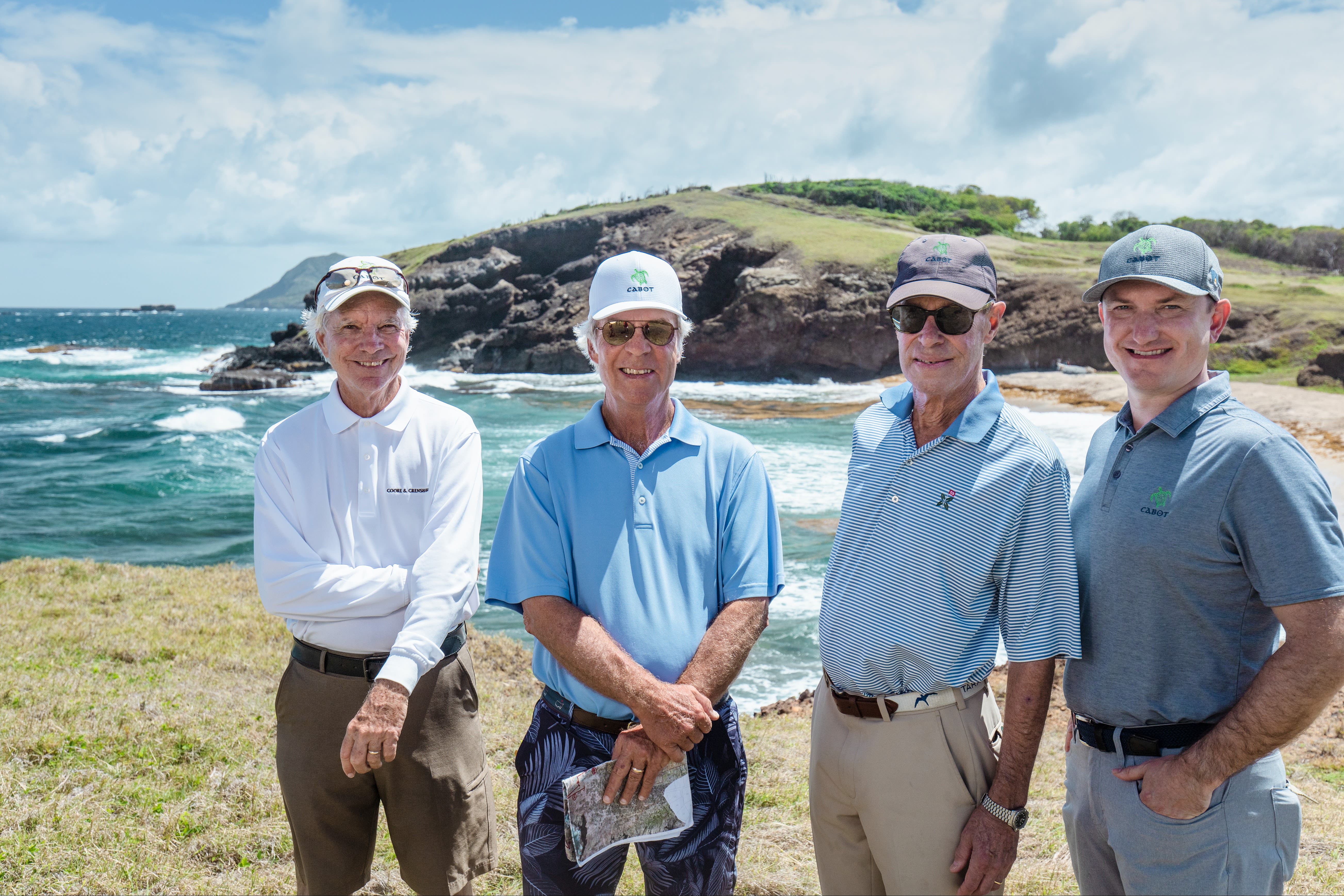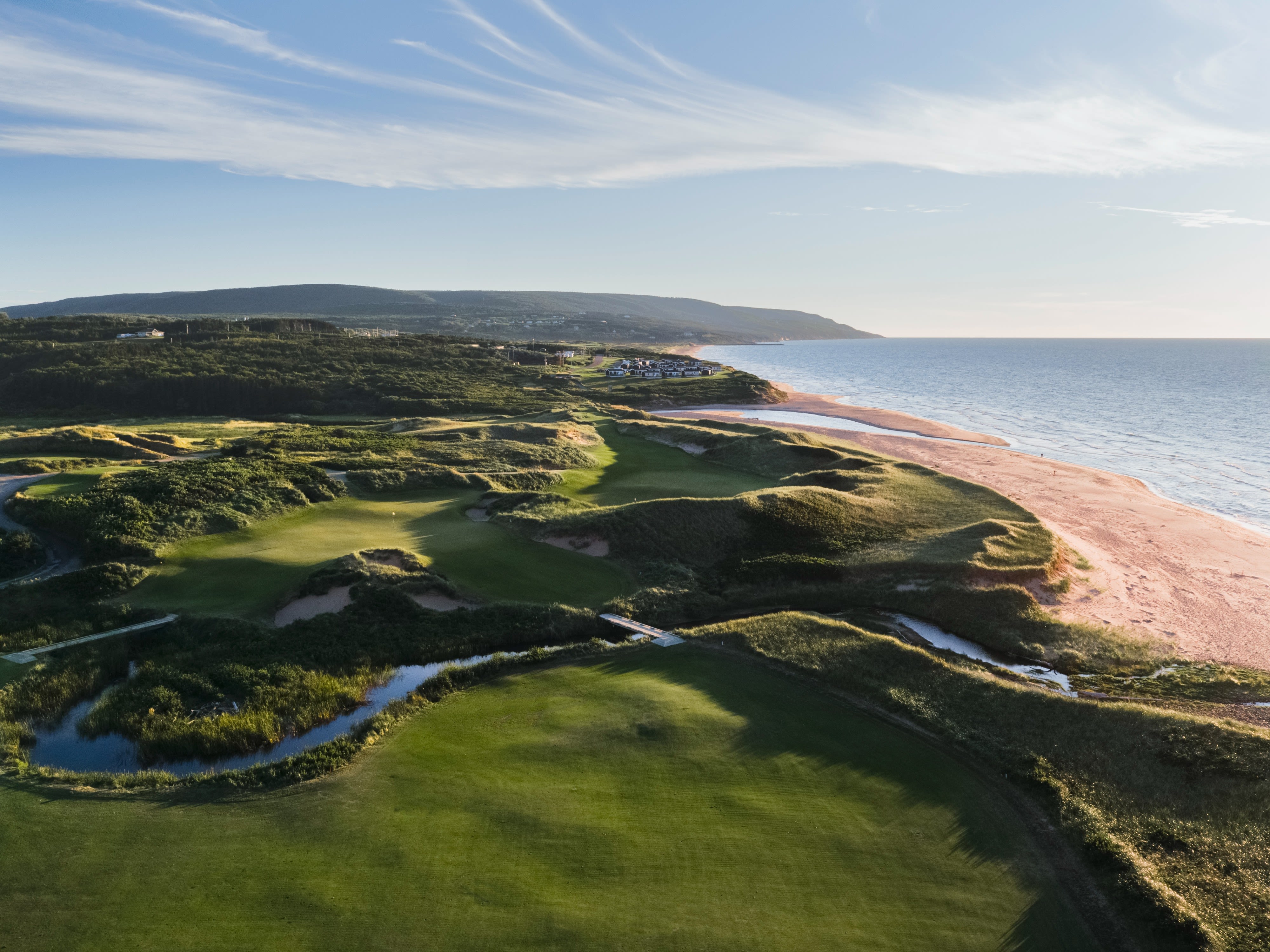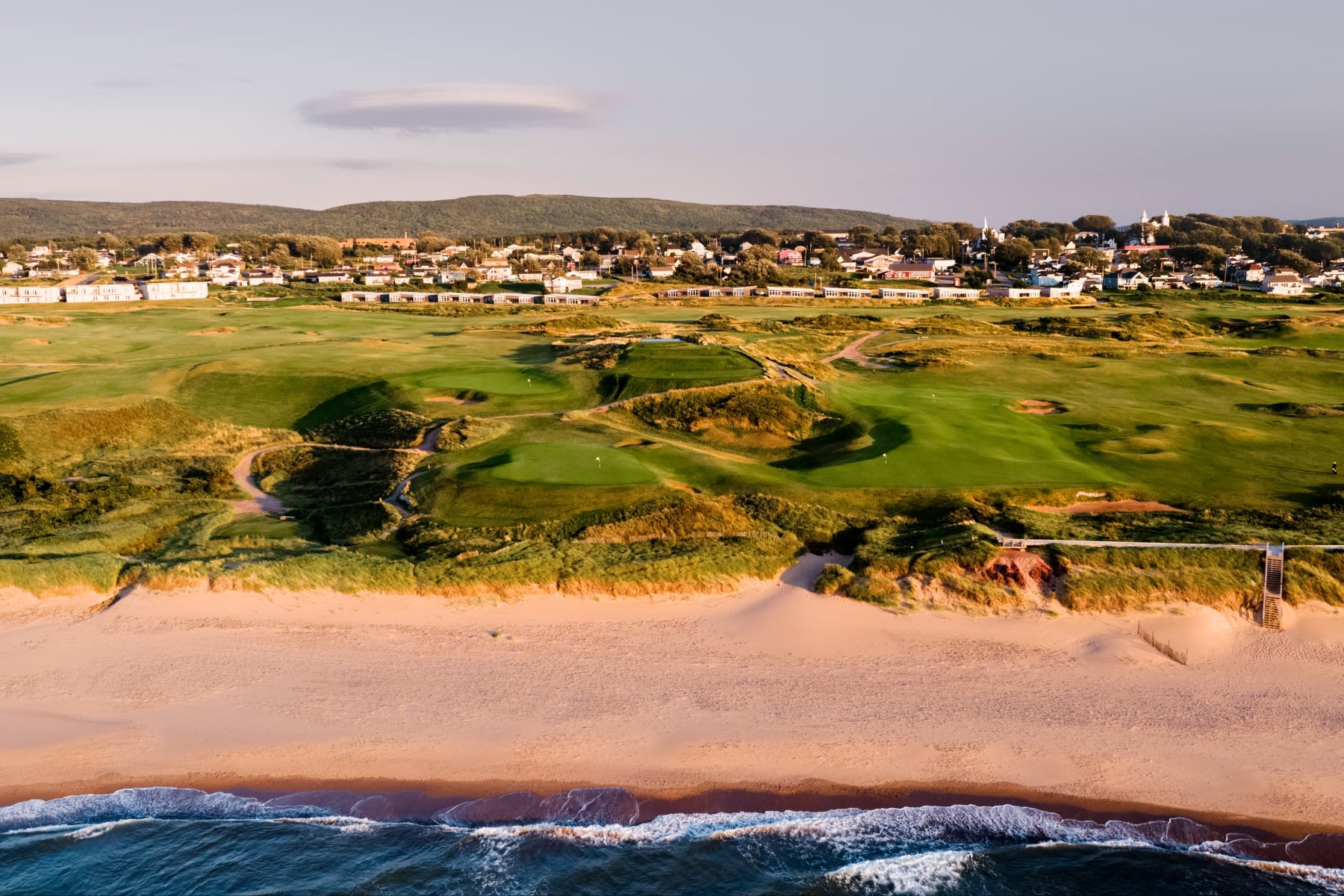Travel
The Cabot Origin Story: An Adventure in Creating the World's Most Beautiful Golf Courses
By Adam Stanley
Published on

The second hole at Cabot St. Lucia.(Jacob Sjoman/Cabot)
This time, Ben Cowan-Dewar really wanted to enjoy the journey.
As Cabot Saint Lucia has gotten closer to becoming a reality, there were certainly a few woozy curveballs thrown at his team. The global COVID-19 pandemic upended some of the original plans and the difficulty of developing land that had no physical infrastructure when they got started has installed a few unforeseen roadblocks.
But it’s coming. And soon. Same with a highly anticipated place in Florida. Same with a highly anticipated place in the Canadian Rockies. Same with a highly anticipated new course in the Scottish highlands.
Sensing a trend?
In the Caribbean Sea-surrounded, Saint Lucia, however, the sun was shining and the air was salty and a dream was coming true.
Cowan-Dewar, Cabot’s CEO, was on the island along with his mentor and partner Mike Keiser — the mastermind behind Bandon Dunes — and Bill Coore and Ben Crenshaw, the acclaimed design team behind both Point Hardy Golf Club in Saint Lucia and Cabot Cliffs in Cape Breton (plus plenty of the world’s best). It was just the four of them walking around and taking in the stunning beauty of this particular project.

Coore, Crenshaw, Keiser and Cowan-Dewar at Cabot St. Lucia. (Jacob Sjoman/Cabot)
“In June we had a ribbon cutting (in Saint Lucia) with Bill Coore and less than 24 hours later I was walking around with (another of the world’s best golf-course architects) Tom Doak in Scotland,” Cowan-Dewar says. “Those things aren’t lost on me.”
How Cabot got its start
Cowan-Dewar, a 44-year-old father of three and affable Canadian, started his journey in golf-course development nearly 20 years ago after hustling to acquire 40 parcels of land on the northwest tip of Nova Scotia that would eventually become Cabot Cape Breton – a 36-hole golf resort that has been awarded everything there is to be awarded for its golf, architecture, and even food.
He is arguably the brightest mind in golf-course development right now, with his existing projects continuing to be bucket-list spots for weekend warriors and even the best in the world (Brooke Henderson, the 13-time LPGA Tour winner – including the 2016 KPMG Women’s PGA Championship – recently teed it up at Cabot Cliffs, calling it “so amazing and beautiful.” This from someone who travels the globe playing the best of the best).

Cabot Cliffs, part of Cabot Cape Breton, in Nova Scotia. (Jacob Sjoman/Cabot)
Cowan-Dewar’s career in the golf space began long before that, however.
As a 19-year-old, Cowan-Dewar founded Golf Travel Impresarios (GolfTi) that organized and operated private golf trips. It allowed him to play on many of the world’s finest courses. He had come a long way from building a small hole as a 12-year-old on his family’s farm in Eastern Ontario.
“I knew I always wanted to build a golf course,” Cowan-Dewar told Canadian magazine SCOREGolf in 2019. “I’d started at a young age at least building a hole, but really that time and those travels you got to see all of the great courses – or most of them.
"I think what that gave me as much as anything is clarity of what made the great courses really great and the not-so-great courses not so great."
Ben Cowan-Dewar, Cabot CEO
In December 2004, Cowan-Dewar first visited the site that would become Cabot Cape Breton, and the next year he approached Keiser — he of Bandon Dunes fame, amongst plenty of other properties and projects — but at the time Keiser said he had too much going on with the Oregon golf mecca.
Cowan-Dewar would go on to sink, essentially, all of his savings into this idea the following year, trying to acquire more land and get the appropriate permitting. Finally, Keiser ended up touring the site with him in 2007 and a formal partnership formed at the end of that year.
Building the world's best new course
The next year, however, marked the 2008 financial crisis and for the most part, golf-course construction had slowed to a halt – except in rural Cape Breton.
According to Golf Digest at the time, Cabot Links was one of just four new golf courses being built in 2009. Rod Whitman, a Canadian architect with a tidy resume, would be the architect. And a 25-year-old Cowan-Dewar would run the show.

Cabot Links, the first Cabot course. (Jacob Sjoman/Cabot)
Keiser, who made his fortune developing and then eventually selling a greeting-card company, has become more than just a partner to Cowan-Dewar. The Canadian calls the in-his-70s Chicago native an “exemplar” in his life, and that, he says, is one of his life’s greatest gifts beyond his immediate family.
“(Our relationship) has evolved in the last 16 or 17 years since we started,” Cowan-Dewar says. “We couldn’t have had more fun together than we have and have had quite the run.”
Cabot Links would open as Canada’s first authentic links course and was dubbed by Digest as the world’s “Best New Course” in 2012.
Yes, the world’s best new course.
Things under the Cabot umbrella have progressed impressively since then. Going to work for Cowan-Dewar has never stopped being exciting.
“As someone who grew up loving golf-course architecture I feel very fortunate to have all the opportunities that we do today and remember the 19 years of foundation that it took to build this house,” Cowan-Dewar says. “It’s pretty thrilling, really.”
This is Part I of a conversation with Cabot CEO Ben Cowan-Dewar. Part II will be published on Oct. 26 and will dive deeper into the current projects Cabot has on the go.


